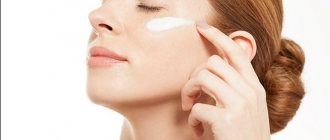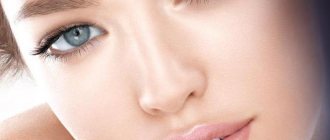Let's talk about berries that are good for your health and skin. Some of them may surprise you.
What we put into our bodies can have just as much of an impact on our skin. In particular, berries contain vitamins and antioxidants that will definitely suit her taste.
When you say the word "berry", you may think of strawberries and raspberries, but they are not actually berries. According to Judy Jernstedt, a professor of plant sciences at the University of California, Davis, these fruits got their names thousands of years ago, before science had a definition for the word berry.
According to Live Science, for a true berry to be classified botanically, the fruit must have an outer shell called an exocarp, a fleshy middle called a mesocarp, and an interior containing seeds called an endocarp. It must also have two or more seeds and come from a flower with a single ovary. This is why strawberries and raspberries are not considered true berries - they come from a flower with more than one ovary.
You might be surprised by some of the fruits on this list, like bananas and watermelon—they're actually classified as berries. Each of these nutrient-rich fruits has skin care benefits.
Blueberry
Perhaps one of the most famous berries, blueberries are the best thing for your skin. At least because it is rich in antioxidants.
Antioxidants fight cell damage caused by free radicals (unstable atoms). In fact, their action is associated with the development of chronic diseases, as well as the acceleration of the aging process.
According to nutritionist Katie Davidson, MScFN, RD, blueberries are especially rich in anthocyanins. These are plant compounds that “have strong antioxidant properties and give blueberries their natural purple-blue hue.”
Blueberries can help improve circulation, notes Davidson, reduce inflammation associated with acne, and boost collagen production, which helps strengthen the skin and plays a key role in maintaining elasticity, which reduces wrinkles.
Mushrooms: harm and contraindications
Harmful properties of mushrooms
The harm of mushrooms is obvious, which is due to the same chemical composition of this unique forest product. Chitin is to blame for everything - a substance that is not absorbed by the body. Moreover, it interferes with the absorption of other nutrients contained in mushrooms. So that you can more clearly imagine what chitin is, it will suffice to say that it is what the shell of some animal species consists of. How can our stomach digest it?! Therefore, scientists have identified contraindications for the use of mushrooms that must be taken into account:
- stomach problems;
- liver diseases (hepatitis, cholecystitis) and kidneys;
- age up to 5 years - absolutely not allowed, from 5 to 14 - in limited quantities, so the question of whether children can have mushrooms disappears by itself;
- Accordingly, during lactation it is advisable for a nursing mother not to eat mushrooms (see the pros and cons of this argument here ).
Excessive, uncontrolled consumption of large quantities of mushrooms can provoke:
- acute chronic pancreatitis;
- inflammation of the pancreas;
- all sorts of complications in the gastrointestinal tract.
The downside of mushrooms is the fact that they absorb toxins and other harmful substances from the atmosphere. So mushrooms collected near roads will definitely not be useful.
So scientists cannot give us a definite answer to the question of whether mushrooms are healthy. Their rich chemical composition makes them very valuable products in our diet, but only in moderation. Uncontrolled passion can lead to the most undesirable consequences. This is the effect mushrooms have on your body: the harm and benefits of this forest product are balanced, but, of course, they should be included in your diet. And especially during fasting.
Watermelon
Yes, watermelon is actually a berry. The fruit, scientifically named pepos, is a special category of berry—with a tough skin, many flat seeds, and fleshy pulp—and it's also good for the skin. While the inside of the watermelon is deliciously juicy, sweet and nutritious, the rind is especially good for the skin as it is rich in vitamins B6 and C.
B vitamins are good for the skin because they stimulate metabolic processes and help cells renew themselves. Vitamin B deficiency can cause acne, dry skin, rashes and wrinkles. Vitamin C, as a powerful antioxidant, can help repair and protect cells from free radical damage.
At the same time, it is not at all necessary to eat the watermelon peel; you can squeeze the juice out of it and add it to a smoothie or simply rub it into the skin.
According to dermatologist Anna Guanche, Koreans have been using watermelon rind for skin care for decades. She told Business Insider: "Korean grandmothers would rub watermelon rind onto sunburn, rashes or irritated skin to soothe it and help it recover faster. "Cooling masks that combine watermelon rind with avocado or banana may help promote healing." This is why watermelon-based cosmetics are so popular in K-beauty.
The benefits and harms of mushrooms for the human body: new research, advice from a nutritionist
Forest mushrooms are not only a soulful snack, but also a way to maintain the health of the body in the fall. There is even a method of treatment with mushrooms - fungotherapy, says nutritionist-gastroenterologist Svetlana Berezhnaya. Don’t think anything bad, we will only talk about safe edible mushrooms. We also hope that you understand mushrooms, know how to cook them, and have heard about botulism.
Porcini mushrooms are good for the heart
Porcini mushrooms are the champions of mycelium in terms of healthy proteins. A kilogram of porcini mushrooms contains more protein than a piece of beef of the same weight. But fat - just a little bit. What distinguishes a serving of stewed porcini mushrooms from a fried steak?
But at the same time, nutritionists insist that porcini mushrooms are an independent and capricious dish. Meat proteins come into “conflict” with mushroom proteins: as a result, a “revolution in the stomach” can begin and is not at all velvety.
Starch slows down the already long process of digesting whites. So potatoes are not the healthiest side dish for these mushrooms. White proteins (forgive the tautology) are best absorbed with slow carbohydrates, for example, unprocessed rice. So the delicious Sicilian dish - “risotto with porcini mushrooms” is one of the best options for digestion.
Boletus mushrooms contain a lot of “heart” vitamin PP (nicotinic acid, “nicotine”, as doctors say), which proves the benefits of these forest mushrooms for the human body. Cardiologist Tamara Ogieva believes that soup made from fresh porcini mushrooms is very good for heart patients - to strengthen the walls of the myocardium.
Porcini mushrooms also contain a lot of iron salts. Therefore, buckwheat with mushrooms is an excellent remedy for the prevention of iron deficiency anemia.
They also contain zinc, iodine, copper and vitamin B1 - necessary for maintaining immunity.
Milk mushrooms versus Koch sticks
These autumn forest mushrooms are crispy, strong, neat - great either salted, soaked, or fried in sour cream. They are special among mushrooms - they provide our body with beneficial bacteria and are practically the only source of “sunshine” vitamin D that is not of animal origin (we usually get it from dairy products and cod liver).
In folk medicine, soaked milk mushrooms are considered one of the best means of preventing kidney stones. The bio-active substances of these mushrooms prevent the formation of urates and axalates (these are different types of kidney stones).
Milk mushrooms also contain antibiotic-like substances that suppress the proliferation of Koch bacilli and strengthen the mucous membranes of the bronchi and lungs. Therefore, during the cold season, a salted bucket of milk mushrooms will go great.
Chanterelles are natural antibiotics
Experts call these mushrooms nothing more than “a typical antibiotic mushroom.” Stimulates the functioning of the immune system organs, for example, the spleen due to large doses of vitamins A, B1, B2, zinc and selenium. There is also a study that chanterelles are good for diabetes, which also indicates the benefits of mushrooms for the human body.
The enzymes contained in chanterelles trigger the process of repairing damaged pancreatic cells. But at the same time, nutritionist Svetlana Berezhnaya warns, those who suffer from pancreatitis or other acute inflammations of the digestive organs should not rely on mushrooms; it is still a very difficult to digest product.
By the way, chanterelles are the only mushroom that does not accumulate radioactive substances. On the contrary, it removes radionuclides from the body.
IMPORTANT!
Harm and benefits of forest mushrooms: who and when to treat them with caution
Svetlana Berezhnaya, nutritionist-gastroenterologist, doctor of the highest category:
— Any mushrooms should not be given to children under 6 years of age; even completely edible mushrooms can be harmful to a child’s body.
— There is no need to eat mushrooms during acute inflammatory processes in the digestive system (gastritis, ulcers, pancreatitis, liver problems).
— You should not eat salted and fried mushrooms if you are prone to stool disorders.
— Try not to collect old “overripe” forest mushrooms - their caps and stems (even if they are not wormy) contain less proteins and vitamins and more heavy metal salts.
source
Advertising
Grape
Grape berries are classified as "true berries" because the wall of the fruit, known as the pericarp, is entirely fleshy. Like blueberries, grapes are rich in antioxidants. It also contains vitamin K, which helps maintain healthy bones and muscles.
In addition to their nutritional value, grapes are good for moisturizing the skin since they are 82% water. Staying hydrated is key to healthy skin. If you don't drink enough water, it can become tight and dry, less elastic and prone to wrinkles.
Benefits of mushrooms

Thanks to such a rich chemical composition, the benefits of mushrooms become obvious.
- Due to their low fat content, mushrooms are considered a low-calorie food, so you can eat them in any form without worrying about the risk of gaining extra pounds. It is precisely this effect of mushrooms on the body that makes it possible to use mushrooms for weight loss quite effectively.
- Due to their high protein content, mushrooms are useful for vegetarians and those who fast.
- Lecithin in mushrooms prevents cholesterol from accumulating in the body, so it is very useful to eat mushrooms for cardiovascular diseases and serious metabolic . So mushrooms for diabetes mellitus act as a kind of healers if they are consumed in reasonable quantities.
- Antioxidants in mushrooms (and ergothioneine in particular) destroy cancer cells .
- The ß-glucans contained in mushrooms increase immunity ( methods for strengthening the immune system can be found here).
- Amino acids improve memory and mental activity.
- B vitamins (in particular, thiamine, riboflavin and pyridoxine) have a beneficial effect on the nervous system , strengthen hair and nails, and care for the skin.
- Chitin, despite the fact that it prevents the body from absorbing mushroom protein, also brings clear benefits: it absorbs waste and toxins, which helps cleanse the body.
- Niacin (vitamin PP) improves blood circulation and strengthens the walls of blood vessels.
The obvious beneficial properties of mushrooms, proven in research, make it possible to make medicines from them and use them in the treatment of a number of the most serious diseases:
- urolithiasis;
- atherosclerosis;
- diabetes;
- tuberculosis;
- obesity;
- tonsillitis;
- hypertension;
- migraine;
- gout;
- pustular abscesses;
- bronchial asthma;
- various allergic reactions.
This is how mushrooms are beneficial for the human body. Naturally, we are talking about ordinary edible mushrooms that you eat, and not about poisonous and glucinogenic mushrooms. But don’t flatter yourself too much: firstly, chitin prevents the absorption of all these substances by our body, and secondly, at a temperature of 100 °C (at boiling) most of these substances evaporate. And it is also impossible not to heat treat mushrooms, since they can contain large amounts of toxins that they have absorbed from the environment. And yet, even ordinary, familiar edible mushrooms can be harmful, and therefore there are a number of contraindications to their use that you should not ignore. After all, the health of both you and your loved ones depends on it.
Bananas
A banana tree is a plant whose fruits are formed from one ovary and several seeds. So, from a scientific point of view, bananas are berries. They are good for skin health because they are high in vitamins C, B6 and A. The latter, an antioxidant, helps hydrate the skin and also speeds up the skin's healing process and prevents breakouts.
According to Zara Risoldi Cochrane, PharmD, MS, FASCP, vitamin A may help those who suffer from acne. “It all depends on the source and how you use it,” she says. "Eating foods rich in vitamin A can promote better skin health from the inside out, while topical formulas can directly combat breakouts."
Chemical composition of mushrooms

To learn about the benefits and harms of mushrooms, just look at what they consist of. The rich chemical composition of mushrooms has recently been subjected to extensive research, so scientists presented the following picture to our consideration.
- Protein substances
Research has shown that mushrooms contain large amounts of protein. Because of this, mushrooms are often called plant or forest meat. 1 kg of fresh mushrooms contains the same amount of protein as 100 grams of meat. But it's not that simple. Unfortunately, mushroom protein is poorly absorbed by the body due to fiber, which is present right there in mushrooms and is difficult to digest. It is contained in mushroom threads. So, if you want the protein from the mushroom to benefit your body and benefit your body, it is advised to cut the mushrooms into small pieces when cooking, and chew them thoroughly when eating.
- Carbohydrates
Yes, fiber in mushrooms, rich in chitin, is also present, but it is practically not digested.
- Sugary substances
Thanks to the sugary substances in their composition, mushrooms have such a pleasant taste.
- Fats
Our champignons, saffron milk caps and, of course, porcini mushrooms are distinguished by their fat content. Mushroom fats are easily absorbed by the body.
- Resinous substances
Some mushrooms (volnushki, saffron milk caps, milk mushrooms) contain interesting resinous substances, which often appear on the surface of the mushroom in the form of small droplets. They are also called milky juice. It is this that gives these varieties a specific pungent taste.
- Minerals
Mushrooms contain large amounts of phosphorus and potassium, which exceed the content of these elements in vegetables and even partly fruits. Even seafood contains less phosphorus than mushrooms.
- Essential oils
These substances (terpenes) give mushrooms such a unique smell that cannot be confused with anything else.
- Vitamins
Mushrooms contain vitamins such as A, group B, C, D, PP. The latter is especially abundant in porcini mushrooms, boletuses, boletuses, chanterelles and honey mushrooms. And there are much more B vitamins in mushrooms than in cereals.
- Organic acids
Mushrooms also contain organic acids: butyric, oleic, acetic, lactic and stearic.
- Enzymes
Perhaps one of the most useful components of any edible mushroom: it is the enzymes that accelerate the breakdown of fats, proteins and carbohydrates. Champignons contain a lot of enzymes.
Mushrooms also contain glycogen (animal starch), antioxidants (such as melanin), amino acids, ß-glucans, lecithin, and a lot of regular water. Nutrients in mushrooms are distributed unevenly: proteins, fats and sugars are concentrated mainly in the cap, so mushroom stems are much less valuable. In addition, the legs contain a lot of chitin. Knowing what is contained in mushrooms, you will be able to determine the beneficial properties of mushrooms and contraindications to their use for your body.











